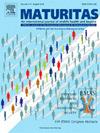老年厌食症的全球患病率:系统回顾和荟萃分析
IF 3.9
2区 医学
Q2 GERIATRICS & GERONTOLOGY
引用次数: 0
摘要
老年厌食症是一种主要的老年综合征,可导致营养不良、虚弱和其他不良健康后果,包括死亡。然而,其流行程度尚未得到明确确定。我们研究了科学文献,以估计全球厌食症的患病率和发病率,以及基于诊断工具、环境和地理位置的趋势。系统检索PubMed、Scopus、Web of Science和EMBASE数据库,检索时间为数据库建立之日至2024年7月。观察性横断面和纵向研究在60岁或以上的成年人中报告了老年厌食症的患病率。研究的质量采用纽卡斯尔-渥太华量表进行评估。随机效应荟萃分析用于估计合并效应。系统评价共纳入了40项研究。其中,36项研究,总样本量为29864296人纳入meta分析。老年人厌食症总患病率为22.7%,发病率为3.78%。从2011年到2024年,这一流行率估计保持相对稳定。住院患者中患病率最高,为34.7%,最常用的工具是简化营养食欲问卷。南美洲的患病率明显更高,为27.1%。我们的研究结果强调,在全球范围内,超过五分之一的老年人患有老年厌食症,这说明需要对其诊断达成全球共识。本文章由计算机程序翻译,如有差异,请以英文原文为准。
Global prevalence of anorexia of aging: A systematic review and meta-analysis
Anorexia of aging is a major geriatric syndrome that contributes to the development of malnutrition, frailty, and other adverse health outcomes, including death. However, its prevalence has not been clearly established. We examined the scientific literature to estimate the global prevalence and incidence of anorexia of aging, and its trends based on diagnostic tools, settings, and geographical location. A systematic search was conducted in PubMed, Scopus, Web of Science, and EMBASE from the date of database inception to July 2024. Observational cross-sectional and longitudinal studies in adults aged 60 years or more reporting the prevalence of anorexia of aging were included. The quality of the studies was assessed using the Newcastle-Ottawa Scale. Random-effects meta-analysis was used to estimate the pooled effects. A total of 40 studies were included in the systematic review. Among these, 36 studies with a total sample size of 29,864,296 individuals were included in the meta-analysis. The overall pooled prevalence of anorexia of aging was 22.7 %, and its incidence was 3.78 %. This prevalence estimate remained relatively steady from 2011 to 2024. The highest prevalence was found in the inpatient population, at 34.7 %, and the most used tool was the Simplified Nutritional Appetite Questionnaire. A significantly higher prevalence was observed in South America, at 27.1 %. Our findings highlight that, globally, more than one-fifth of older populations had anorexia of aging, and they illustrate the need for a global consensus on its diagnosis.
求助全文
通过发布文献求助,成功后即可免费获取论文全文。
去求助
来源期刊

Maturitas
医学-妇产科学
CiteScore
9.10
自引率
2.00%
发文量
142
审稿时长
40 days
期刊介绍:
Maturitas is an international multidisciplinary peer reviewed scientific journal of midlife health and beyond publishing original research, reviews, consensus statements and guidelines, and mini-reviews. The journal provides a forum for all aspects of postreproductive health in both genders ranging from basic science to health and social care.
Topic areas include:• Aging• Alternative and Complementary medicines• Arthritis and Bone Health• Cancer• Cardiovascular Health• Cognitive and Physical Functioning• Epidemiology, health and social care• Gynecology/ Reproductive Endocrinology• Nutrition/ Obesity Diabetes/ Metabolic Syndrome• Menopause, Ovarian Aging• Mental Health• Pharmacology• Sexuality• Quality of Life
 求助内容:
求助内容: 应助结果提醒方式:
应助结果提醒方式:


